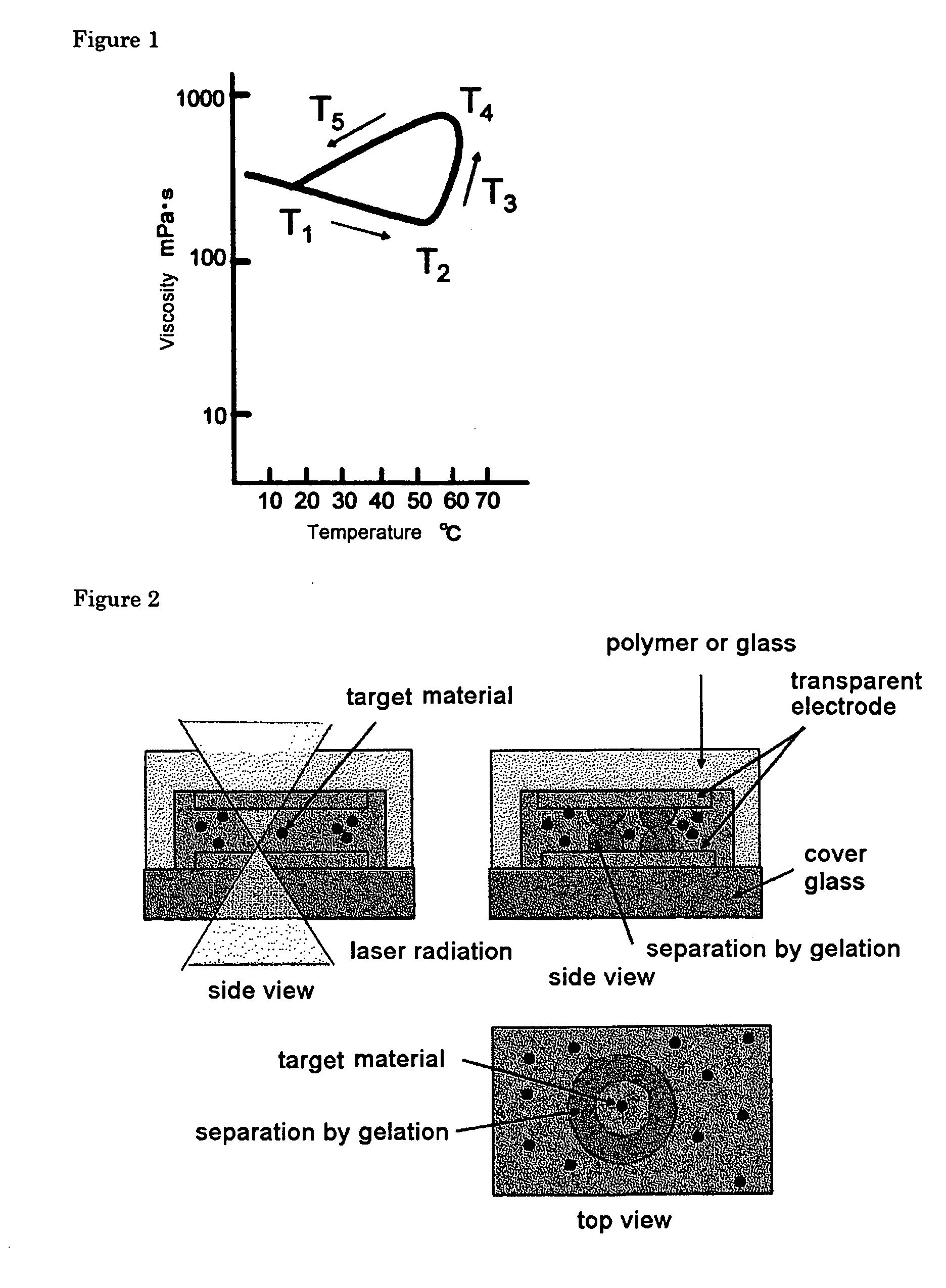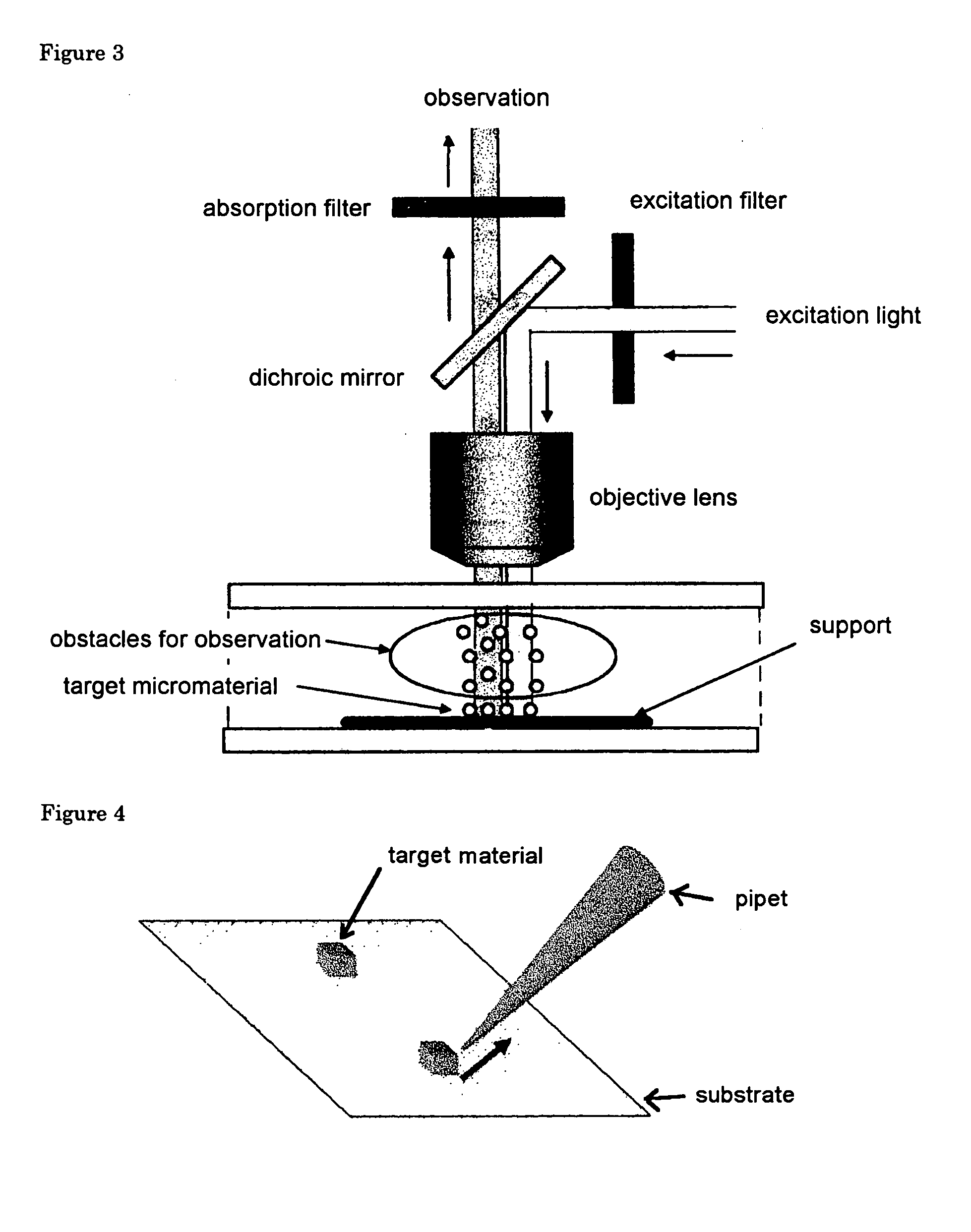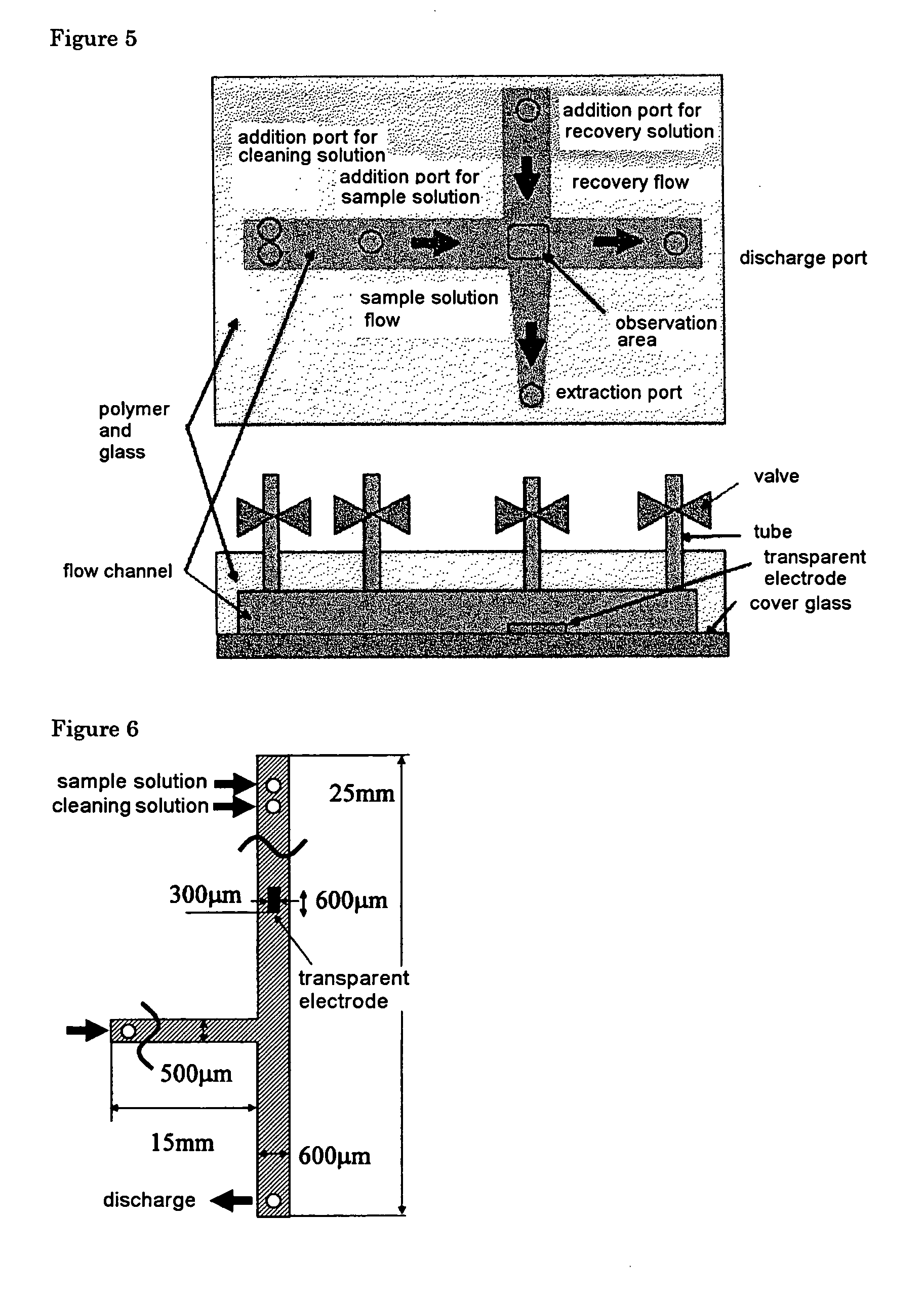Method of apparatus for collecting micromaterial
a micromaterial and apparatus technology, applied in the field of micromaterial collection apparatus, can solve the problems of difficult application to microorganisms several micrometers in size, large time and expense, and difficult to achieve the effect of high-speed recovery and accelerating separation speed
- Summary
- Abstract
- Description
- Claims
- Application Information
AI Technical Summary
Benefits of technology
Problems solved by technology
Method used
Image
Examples
example 2
[0052] Schematic diagrams of the microchips used in the present examples are shown in FIGS. 5 and 6.
[0053] These microchips are equipped with two intersecting flow channels. The form for these two flow channels were created using microtooling, and the microfluid chips were shaped from PDMS (polydimethylsiloxane). The two flow channels intersected forming a cross in the microchip shown in FIG. 5, and the two flow channels intersected forming a T in the microchip shown in FIG. 6. A single discharge port functioned to discharge both a sample and a cleaning solution.
[0054] One flow channel was used to add a sol / gel phase transition substance containing a target material and to move water used to clean unnecessary materials other than subsequently fixed target materials. The other flow channel was used to recover the fixed target material.
[0055] The intersection of the two flow channels (an observation zone) was observed using an inverted optical microscope (Olympus Co., IX70), and th...
example 3
[0061] A microchip similar to the one described in Example 1 with the exception of having transparent electrodes (ITO) located in top and lower sections of an observation zone was used.
[0062] A mixture of a sample and methylcellulose similar to the one described in Example 1 was added to this microchip.
[0063] Both transparent electrodes were warmed by passing electrical current, and the sample and impurities were entirely immobilized once. The target material vicinity was subsequently irradiated using a laser in the same manner as described in Example 1. The design is shown in FIG. 8. The power to the transparent electrodes was subsequently terminated, and water was added from a cleaning water addition port to remove unnecessary materials. The target material remaining was subsequently recovered.
[0064] One merit of the current method is that a sample not near the bottom surface can be immobilized in the environment since the immobilization occurs through localized heating using b...
example 4
[0065] In the present example, a target material was immobilized by heating that combined electrical overheating of an electrode with localized heating using laser irradiation. A schematic diagram of this microchip is shown in FIG. 9.
[0066] This microchip was positioned on a microscope stage. The observation zone could be changed according to the observation magnification of the microscope, and a broad area could be observed by moving the stage. A large amount of sample can be treated by preparing multiple numbers of electrodes, and the work efficiency can be improved. In order to realize immobilization through electrical overheating of an electrode, only one target material of about several microns can be immobilized and, therefore, the number of electrodes needed to be increased. Many electrodes are needed to remove only one target material from several thousands to several tens of thousands of micromaterial samples, and the system could become complex. Therefore, multiple number...
PUM
| Property | Measurement | Unit |
|---|---|---|
| temperature | aaaaa | aaaaa |
| temperature | aaaaa | aaaaa |
| temperature | aaaaa | aaaaa |
Abstract
Description
Claims
Application Information
 Login to View More
Login to View More - R&D
- Intellectual Property
- Life Sciences
- Materials
- Tech Scout
- Unparalleled Data Quality
- Higher Quality Content
- 60% Fewer Hallucinations
Browse by: Latest US Patents, China's latest patents, Technical Efficacy Thesaurus, Application Domain, Technology Topic, Popular Technical Reports.
© 2025 PatSnap. All rights reserved.Legal|Privacy policy|Modern Slavery Act Transparency Statement|Sitemap|About US| Contact US: help@patsnap.com



